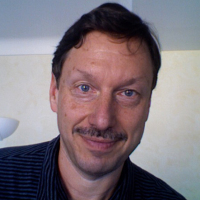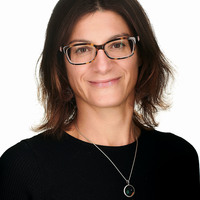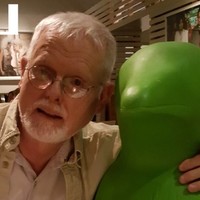Papers by Pieter Terhorst

Advances in Hospitality and Tourism Research (AHTR)
The Covid-19 pandemic has led to a deep crisis in all tourism destinations in the world, and so d... more The Covid-19 pandemic has led to a deep crisis in all tourism destinations in the world, and so did the sun-sea-sand tourism city of Antalya. Will it go ‘back to normal’ after the crisis or will the crisis trigger a significant change? Will it show an engineering or ecological resilience in the future on the one hand or an adaptive resilience on the other? Because the future is open, actors in the tourism industry face, like all actors, a radical uncertainty about it. Under these conditions, they can only ground their decisions on so-called fictional expectations. In this paper, we connect the ‘theory’ of resilience with fictional expectations and explore the expectations of tourism entrepreneurs, managers of tourism associations, and government officials in the tourism city of Antalya with a qualitative research approach based on in-depth interviews with leading hoteliers and discourses of tourism leaders in Antalya's tourism. Some expect a return to business as usual, some exp...
GeoJournal Library, 2016
In political-economic literature on tourism, it is widely argued that the Fordist model of mass-t... more In political-economic literature on tourism, it is widely argued that the Fordist model of mass-tourism has gradually been transformed into one of flexible specialization. This paper argues that the tourism economy of Antalya, a Sun-and-sea mass-tourism city par excellence, does not fit the model of Fordism and only partially fits the model of flexible specialization because it is too crude. Although more refined typologies as successors of Fordism are found in political-economy literature, the paper concludes that it does not make sense to find out which of those types fits a tourism economy of one place. It is better to make an in-depth analysis by what mix of modes of economic coordination (market, hierarchy, association, network, community, and state) all the different economic activities that form together the ‘tourism industry’ are coordinated.
Tourism Management, 2016
h i g h l i g h t s Higher-quality restaurants are more innovative than lower quality restaurants... more h i g h l i g h t s Higher-quality restaurants are more innovative than lower quality restaurants. Restaurants visited by tourists and higher class locals are most innovative. Standardized restaurants are predominantly located in passers-by streets. Innovative restaurants are found in areas visited by both locals and tourists.

Current Issues in Tourism, 2015
It is often argued that the growth of single-asset tourism places is fragile because it is vulner... more It is often argued that the growth of single-asset tourism places is fragile because it is vulnerable to economic fluctuations and is based on specialization and localization economies that lead to an ever stronger lock-in process of path-dependent urban economic development and, in the end, slow growth. In this paper, it is doubted whether a high urban tourism growth implies an ever stronger specialization and an ever stronger lock-in. This paper shows that the growth of tourism stimulates the growth of related and unrelated industries and generates a diversification of the economy, even though some other sectors are crowded out. Antalya (Turkey) is selected as a case-study area not only because its economy is dominated by tourism (it is a good example of a single-asset tourism city), but also because its economy shows a tendency to economic diversification at the sectoral level. This diversification tendency is shown by means of a shift-share analysis and Herfindahl indexes.

International Journal of Culture, Tourism and Hospitality Research, 2015
Purpose – This paper aims to show that the field of restaurants in Amsterdam, a tourist-historic ... more Purpose – This paper aims to show that the field of restaurants in Amsterdam, a tourist-historic city par excellence where tourism and daily life of locals are spatially intimately intertwined, is nevertheless segmented according to types of restaurants and their micro-geography (passers-by streets versus side streets and “hidden places” in the city). The kernel of the authors’ argument is that on the restaurant market, just as on markets of other cultural products, there is a lot of quality uncertainty because the standards of valuation are contested, differ between classes and lifestyle groups and vary in space and time. Design/methodology/approach – Case study is based on face-to-face interviews with tourists and restaurants in the summer of 2013 in Amsterdam. The restaurants to be interviewed were selected on the basis of a stratified sample of new start-ups, covering different neighbourhoods of Amsterdam. The interviews with restaurants and tourists were done on the basis of so...

Annales des Ponts et Chaussées, 2002
mique est remarquable, car la crise 6conomique de la fin des ann6es 70 et du d6but des ann6es 80 ... more mique est remarquable, car la crise 6conomique de la fin des ann6es 70 et du d6but des ann6es 80 aux Pays-Bas avait 6t6 exceptionnellement s6v6re selon les standards internationaux. Le pays a souffert de ce que l'on appelait le ~ mal hollandais-. Et la ville d'Amsterdam-ville-providence par excellence-6tait ~, la traine de l'ensemble du pays. C'6tait une ville engag6e dans un profond d6clin 6conomique et ddmographique. Quelles sont les sp6cificitds du ~, real hollandais ,, et du d~clin 6conomique et d6mographique d'Amsterdam ? Et quelles sont les sp6cificit6s du <~ miracle hollandais ,, et du redressement d'Amsterdam ? J'avance dans cet article que le ,, mal hollandais ,, et le d6clin d'Amsterdam d'une part, et que le ,, miracle hollandais-et le redressement d'Amsterdam de l'autre, ont ~t6 si 6troitement entrem(~lfs qu'ils forment deux r6gimes nationaux-urbains successifs. 43 Annales des Ponts et Chauss~s n ° 102, 2002 © 2002 l~ditions scientifiques et m6dicales Elsevier SAS. Tous droits r6serv~s

Tijdschrift voor economische en sociale geografie, 2018
Over the last ten years Turkey has gone through two different types of crises, namely the global ... more Over the last ten years Turkey has gone through two different types of crises, namely the global economic crisis of 2008-2009 and the (geo)political crisis after 2015. This paper analyses the resilience of the economy of the tourism city of Antalya to both crises by focusing on the development of GDP of its inbound tourism countries and the births and deaths of both tourism and non-tourism firms. The impact of the global economic crisis was moderate. The (geo)political crisis of 2016, by contrast, had a strong impact on Antalya's economy. The city's tourism arrivals strongly decreased, new firm formation stagnated, although the death rate of firms did not increase, and the sectoral diversification of new firms declined. Antalya conforms more to the engineering type of resilience to both crises than to the adaptive one which requires ability/ willingness to shift into new sectors.

The chapter discusses the importance of movement in our understanding of globalization and sugges... more The chapter discusses the importance of movement in our understanding of globalization and suggests ways to nuance a common assumption: that all kinds of mobilities are steadily expanding as globalization expands. The chapter contextualizes the evolution of the spatio-temporal dimensions of mobility and migration and its organizational dimensions, insisting on the agency of mobile individuals within a complex and multi-scalar policy framework. It shows how it has become very difficult to map contemporary moving patterns, which do not correspond anymore to arrows tracing direct trajectories from one point to another: the example of still-points on the migratory roads towards Europe, notably when migrants get ‘lost in migration’, held still for months or years in facilities where they are detained due to the lack of legal status. While pinpointing the contradictory evolution of mobility and migration, the chapter however insists on the fact that the mobile component of all socio-spati...

Handbook on the Geographies of Globalization
Globalization is more often than not associated with remote places and large-scale perspectives w... more Globalization is more often than not associated with remote places and large-scale perspectives while it is pervasive of our most personal and mundane activities. As we take our breakfast we might be conscious of the importance of globalization when we read the daily news, but we might easily overlook that the cutlery, microwave or smart phone we use as well as what we eat and drink are shaped by globalization and have shaped it. Christian Grataloup-a French geographer specializing in the géohistoire of globalization (Grataloup, 2009, 2010, 2017)-has looked in his book Le monde dans nos tasses (Grataloup, 2017) behind the seemingly self-evident façade of our breakfast. As the geographer David Harvey notes, we can 'consume our meal without the slightest knowledge of the intricate geography of production and the myriad of social relationships embedded in the system that puts it upon our table' (Harvey, 1990: 422-423). Grataloup, however, has shown how this everyday experience is the product of particular paths of globalization-according to the sociologist Anthony Giddens (1990: 64) 'the intensification of worldwide social relations which link distant realities in such a way that local happenings are shaped by events occurring many miles away and vice versa'. In particular he reminds us in his analysis of the world in our breakfast, that this specific meal is a rather recent phenomenon. It emerged in Europe in the seventeenth century, replacing a meal that was quite similar to the other meals of the day-which it still is nowadays among groups less affected by globalization around the world. Indeed the new fashion spread from the urban bourgeoisie in Amsterdam and London to the European aristocracy, then to popular classes in Europe and beyond Europe among urbanites and well-to-do classes. The drinks associated with breakfast-tea, coffee and chocolate-and the sugar used by many to sweeten them, were originally very expensive and demonstrated economic prosperity and social distinction. Nowadays, they are not only travelling great distances to arrive on our breakfast tables, their very production is a quintessential component in the history of globalization of the past centuries. The control of the production and trade of these by now common breakfast staples was one of the main drivers of the early-modern European expeditions across the world seas. With this urge to control came claims on territories and sea routes, the founding of colonies, the establishment of plantations in these colonies, the transplantation of crops (Crosby, 2003, 2015), and the movement of enslaved and forced labour across continents. Contemporary areas of production are now often far removed from those of origin: we tend to associate cacao more with the current main producers Ivory Coast

Economic geographers have become strongly focused on two scales over the last 25 years : the loca... more Economic geographers have become strongly focused on two scales over the last 25 years : the local and the global. That’s why they mostly ignore the growing literature on the so-called variety of capitalism thesis that, contrary to what the glocalisation thesis claims, stresses a persistent continuity of national forms of capitalism and national forms of the state in the era of globalisation. In this variety-of-capitalism literature the concept of institutional complementarity plays a key role. It means, among others, that one institution makes the other more efficient (and vice versa). In their studies on clusters economic geographers stress a strong “horizontal” institutional complementarity at the local level (although they do not use that concept) but largely ignore a “vertical” complementarity of local and national institutions. Adherents of the variety of capitalism thesis, on the other hand, stress a “horizontal” institutional complementarity at the national level but, being ...
In opdracht van Wetenschappelijke Raad voor het Regeringsbeleid, Den Haag en Instituut voor Socia... more In opdracht van Wetenschappelijke Raad voor het Regeringsbeleid, Den Haag en Instituut voor Sociale Geografie, Amsterdam
METU JOURNAL OF THE FACULTY OF ARCHITECTURE, Nov 20, 2017
Received his M.Sc. from the University of Amsterdam, Department of Human Geography in 1980. Earne... more Received his M.Sc. from the University of Amsterdam, Department of Human Geography in 1980. Earned his PhD. in human geography from the Department of Geography, Spatial Planning and International Development Studies of the same university in 1997. His major interests are (political) economic geography and urban planning. p.j.

Anatolia
ABSTRACT This study is about the expectations of the future of hoteliers in the tourism city of A... more ABSTRACT This study is about the expectations of the future of hoteliers in the tourism city of Antalya who intend to start a new firm during the recent (geo)political crisis in Turkey. The starting point of our analysis is that capitalism is a dynamic open system that is full of creativity and novelties. That is why entrepreneurs who plan to invest face a radical uncertainty about the future and can neither make rational decisions nor form rational expectations. Instead, their decisions are based on fictional expectations (Beckert) as a motivational basis of action that are not only individually but also socially constructed by a variety of social factors that are never discussed both in tourism and resilience literature. By doing a case study, the fictional expectations of starting hoteliers are explored. The main results are the fictional expectations of hoteliers are formed in interaction with other actors in the tourism industry and banks, and, notwithstanding the geopolitical crisis that severely hit tourism and future threats such as overtourism and pandemic, the hoteliers are optimistic about the future because of believing their luxury service of their (4 and 5) star hotels and the place quality of Antalya, Turkey.

Tijdschrift voor economische en sociale geografie
This paper analyses new firm formation in the Amsterdam restaurant industry, on the basis of an i... more This paper analyses new firm formation in the Amsterdam restaurant industry, on the basis of an in-depth research of 37 new restaurants, through the lens of the theory of evolutionary economic geography. The findings show that restaurateur-chefs largely replicate the kitchen of their parent firms whereas restaurateur-managers can more easily switch to a different type of kitchen. It means that replication of individual knowledge and skills are more important than replication of routines. Restaurateurs who came from other related industries did not bring something special from their former jobs in their restaurants. In addition, new restaurants benefit differently from extra-firm relations (with respect to attracting capital, monitoring other restaurants, finding chefs and cooks, relations with suppliers and media) during their start-up process and thereafter. Those extra-firm relations are found at the local, national, and global scale.

Anatolia, Jan 1, 2011
In the literature, tourism is defined as a production system that is composed of an array of econ... more In the literature, tourism is defined as a production system that is composed of an array of economic activities aimed at producing and selling tourist products, the tourist product itself and the institutions that regulate the system. Although it is very fruitful, it
suffers from a weakness from a spatial perspective. The first aim of this paper is to spatialize tourism production systems in a more systematic and multidimensional way by discussing the intertwined role of place, territory, scale, and networks. Second, the paper aims to show how and why the process of tourism place making, especially in the case of Antalya, is narrowly intertwined with the scaling, territoriality, and global production networks of a tourism production system. (Re)scaling, territory, and networks have played an important role in Antalya’s tourism production system, which
institutionally complement each other and form a coherent whole.










Uploads
Papers by Pieter Terhorst
suffers from a weakness from a spatial perspective. The first aim of this paper is to spatialize tourism production systems in a more systematic and multidimensional way by discussing the intertwined role of place, territory, scale, and networks. Second, the paper aims to show how and why the process of tourism place making, especially in the case of Antalya, is narrowly intertwined with the scaling, territoriality, and global production networks of a tourism production system. (Re)scaling, territory, and networks have played an important role in Antalya’s tourism production system, which
institutionally complement each other and form a coherent whole.
suffers from a weakness from a spatial perspective. The first aim of this paper is to spatialize tourism production systems in a more systematic and multidimensional way by discussing the intertwined role of place, territory, scale, and networks. Second, the paper aims to show how and why the process of tourism place making, especially in the case of Antalya, is narrowly intertwined with the scaling, territoriality, and global production networks of a tourism production system. (Re)scaling, territory, and networks have played an important role in Antalya’s tourism production system, which
institutionally complement each other and form a coherent whole.